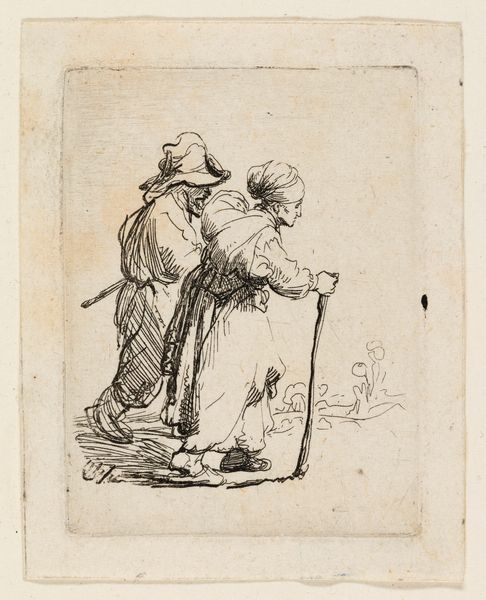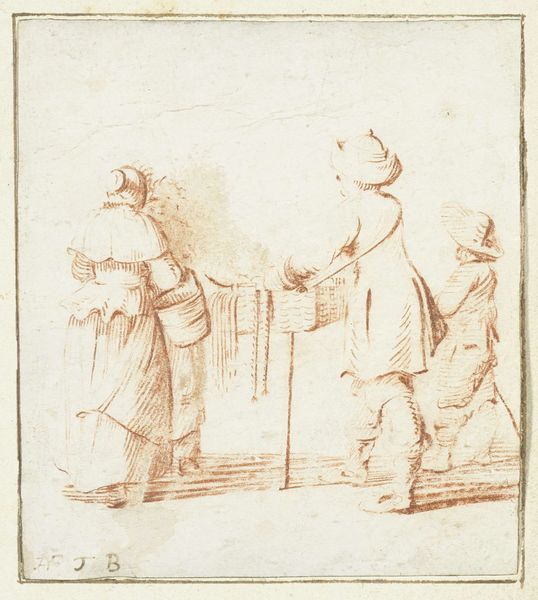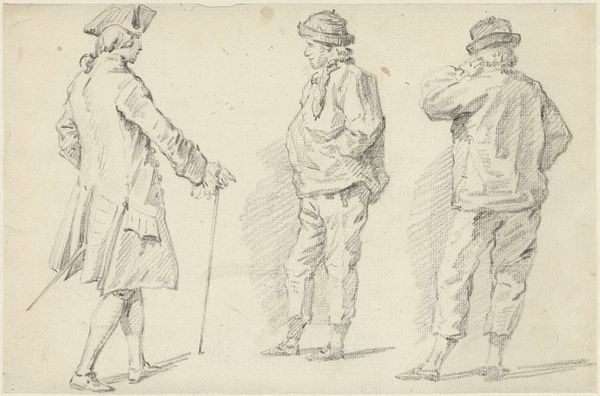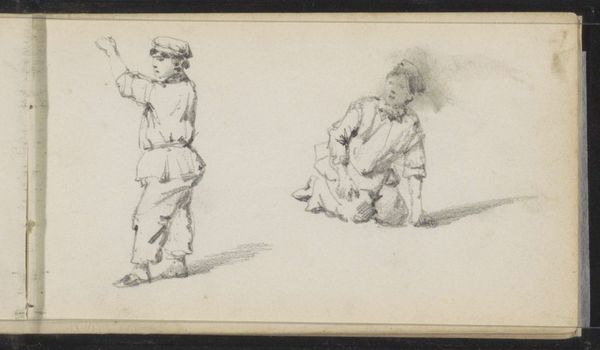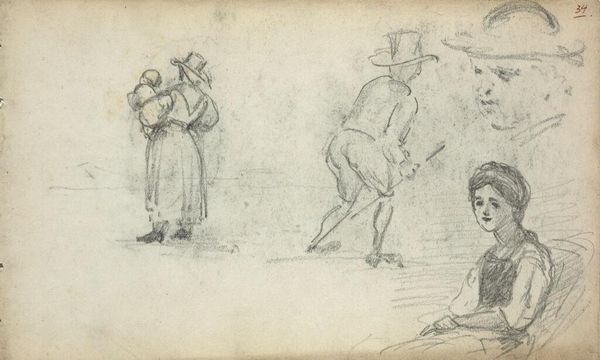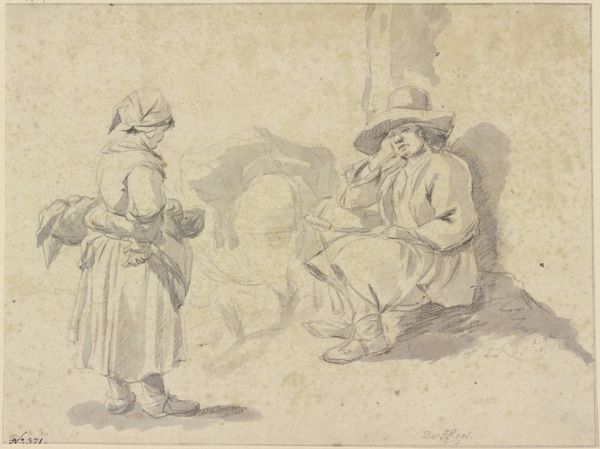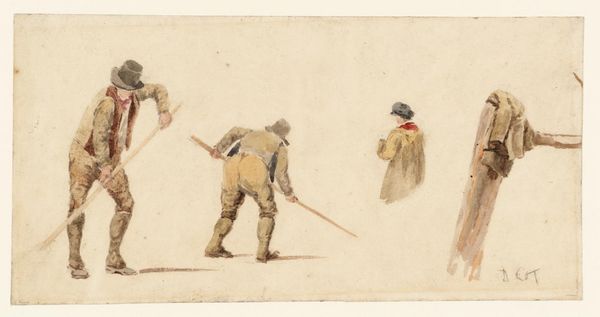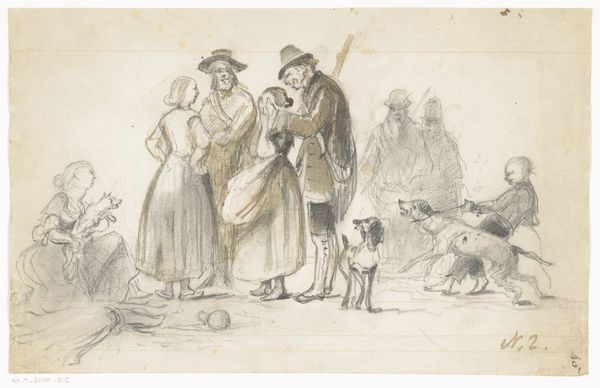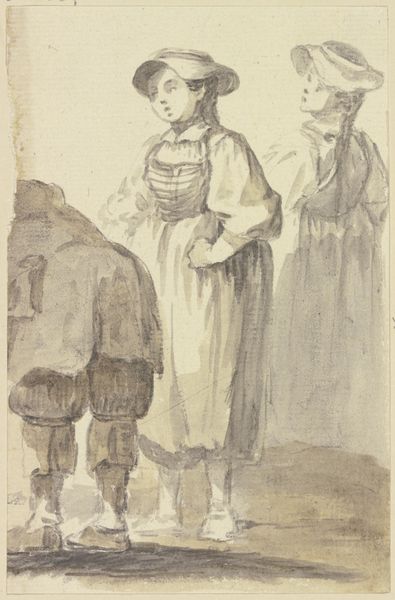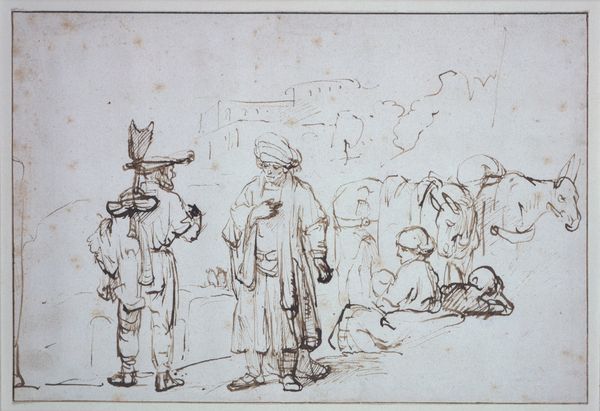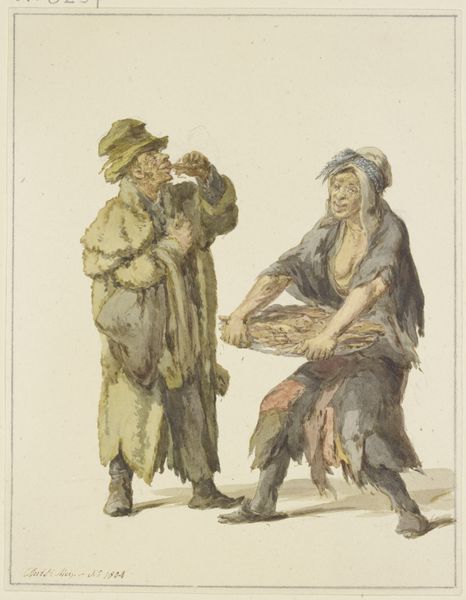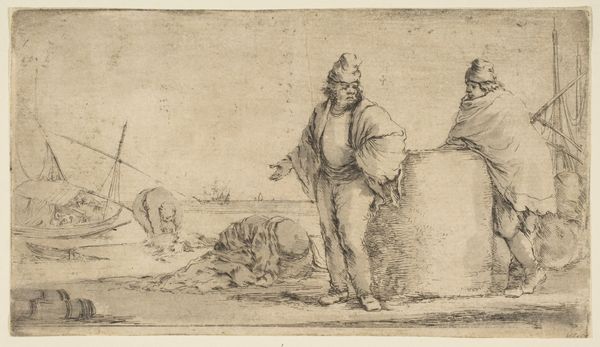
Studies of a Man and a Woman Standing on the Bank of a Frozen River, with a Town in the Distance c. 1610 - 1615
0:00
0:00
drawing, pencil
#
drawing
#
dutch-golden-age
#
landscape
#
figuration
#
pencil
#
genre-painting
Dimensions: height 189 mm, width 272 mm
Copyright: Rijks Museum: Open Domain
Curator: Before us is Hendrick Avercamp's drawing, "Studies of a Man and a Woman Standing on the Bank of a Frozen River, with a Town in the Distance," created around 1610 to 1615. It’s held at the Rijksmuseum. Editor: Oh, the sketchiness is lovely! It has this dreamlike, half-remembered quality to it. They both seem a bit forlorn, standing there in that winter scene. Gives me the shivers, even though it’s just on paper. Curator: It's primarily executed in pencil, a medium offering the potential for delicate linework which really shines here. Avercamp was deeply invested in representations of Dutch daily life. Look at the figures - the clothing, the accessories, everything conveys their social status and involvement in the commerce of the era. Editor: I see that. The woman has such a load to carry. And is that a fishing spear the man's carrying? I like the hints of color that appear around their clothing. So, the man is off to spear something frozen to eat. Reminds me of simpler times somehow... except being frozen isn't all that fun, of course! Curator: That "simplicity" you speak of belies a sophisticated engagement with the economic realities of the Dutch Golden Age. Access to materials, the cost of paper versus canvas – even the depicted labor is indicative of social hierarchies at the time. Were the fish to be sold, bartered, or consumed within the household? It's all a part of the equation. Editor: Yes, I suppose the whole commerce aspect changes the perspective somewhat! Maybe he just caught a particularly marvelous fish. I love that even within the sketch the figures feel very grounded. And I see Avercamp subtly hinted at a whole town back there behind them in the sketch, practically breathing! Curator: Note too that the composition and subject matter are distinctly Dutch; a departure from earlier aristocratic portraits. These are 'common' folk rendered on paper and destined for sale within a burgeoning art market driven by merchant capital. Even the materials speak of this transition. Editor: Absolutely. Knowing the story behind it definitely changes how you read the piece. Thank you for illuminating this rather somber, yet fascinating sketch, with such intriguing context. Curator: And thank you for that beautiful intuitive reading; it serves as a powerful reminder that material analysis should never negate the potential of imaginative interpretation.
Comments
No comments
Be the first to comment and join the conversation on the ultimate creative platform.
